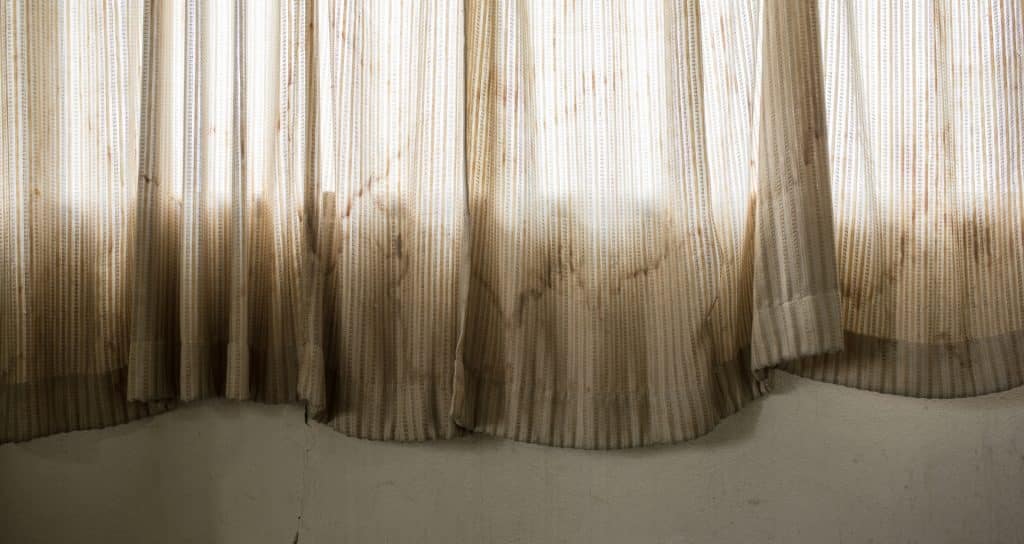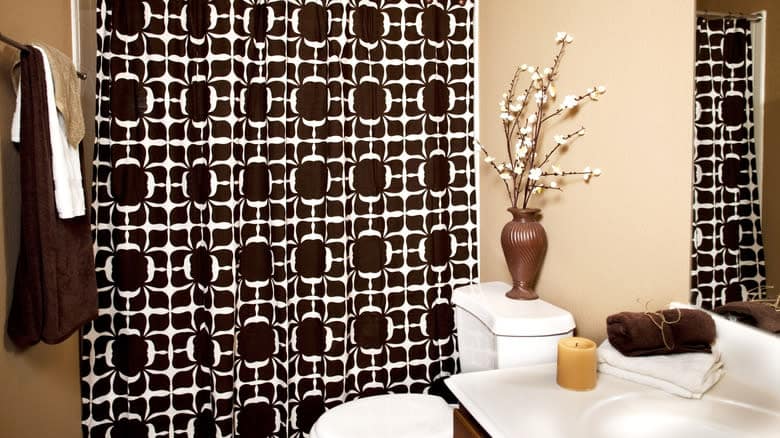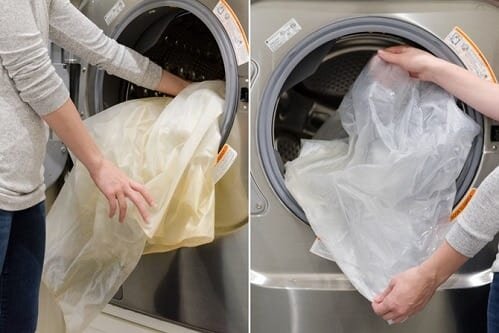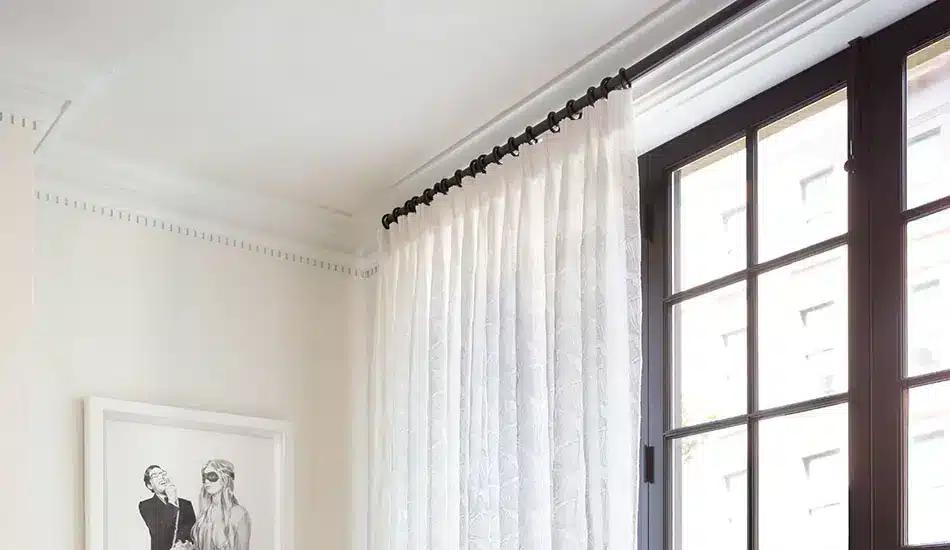In the humidity of Dubai’s coastal climate, curtains act like silent sponges soaking up moisture until they become breeding grounds for mold and mildew. Learning how to prevent mold on curtains is essential to maintain both hygiene and home aesthetics. Moisture from high indoor humidity, condensation near windows, or kitchen steam combines with dust and organic debris, creating the perfect environment for spores to germinate. This article is tailored for Dubai homeowners, renters, allergy-prone residents, and property managers. You will understand why mold and mildew form on curtains, the most common risk factors unique to our region. We’ll compare the best fabrics and linings from anti-mildew fabric to mold-resistant curtain tips. You’ll discover daily habits to keep curtains dry, effective cleaning techniques to tackle stubborn stains (including curtain mold removal on blackout curtains), and clear guidelines on when to replace mold-affected curtains. Along the way, learn how simple practices in curtain care in humid climates and proper selection of moisture-wicking materials can protect your investment and indoor air quality. By the end, you’ll be equipped with actionable steps, from spot treatments to preventive maintenance, so you can confidently prevent mold on curtains and enjoy fresh, beautiful window treatments year-round.
How to Prevent Mold & Mildew on Curtains


WHY MOLD AND MILDEW FORM ON CURTAINS
Case Study: Dubai homeowner Sara noticed black speckles on her blackout curtains just two days after kitchen steam. She began weekly airing sessions and spot-treating damp areas and watched mold growth disappear. This real-world example shows how simple habits deliver powerful curtain mold prevention.
Curtains trap moisture from indoor air, especially when relative humidity exceeds 60 percent. In Dubai’s summers, coastal humidity often averages over 59 percent and can spike to 90 percent, creating ideal conditions for spores to germinate. Fabric surfaces also collect dust and skin cells, providing nutrients for mold colonies. Poor ventilation, infrequent cleaning, and proximity to AC units further exacerbate moisture retention. Without regular airing and proper material selection, microscopic fungi visibly colonize curtains within 48 – 72 hours of dampness .
What causes mildew on curtains?
Mildew on curtains is triggered by excessive moisture and organic debris on fabric. When relative humidity stays above 70 percent, spores germinate rapidly on porous surfaces. Condensation near poorly insulated windows leads to water droplets on hems and folds. Dust, skin cells, and cooking vapors supply the nutrients mold needs. Limited airflow in closed rooms traps damp air, preventing curtains from drying fully. This is why curtain mold removal requires addressing both moisture and debris to be effective.
COMMON RISK FACTORS IN DUBAI HOMES
Dubai’s urban dwellings face specific challenges: high ambient humidity, air-conditioned interiors that dehumidify unevenly, and coastal salt air that clings to fabrics. Mold on blackout curtains can spread quickly when the PEVA backing traps humidity. Many apartments also lack wrap-around tracks or side returns to seal gaps, allowing damp air to accumulate. In kitchens and bathrooms without proper exhaust, steam drifts into living areas, wetting adjacent panels. Installing dehumidifiers and ensuring cross-ventilation help maintain indoor relative humidity between 35 – 50 percent, the EPA-recommended range to deter mold growth .
BEST FABRICS AND LININGS TO PREVENT MOLD GROWTH
Certain materials naturally resist fungal colonization. Synthetic fibers like polyester and microfiber do not absorb water, allowing curtains to dry rapidly. Anti-mildew fabric for curtains often features moisture-wicking finishes or silver-ion treatments that inhibit spore development. In contrast, natural fibers such as cotton and linen retain moisture and require more intensive care. Adding a moisture-barrier lining (such as PEVA or rubberized backings) creates an air gap that reduces thermal bridging and condensation. Selecting moisture-wicking linings helps prevent mold on curtains in humid climates.
| Fabric Type | Mold Resistance | Care Level |
|---|---|---|
| Polyester (blackout) | Very High | Wipe with mild detergent; air dry |
| Microfiber blend | High | Machine wash; low-heat dry |
| Natural linen | Low | Professional dry clean |
| Cotton | Medium | Machine wash; prone to staining |
| Anti-mildew treated synthetics | Very High | Wipe or machine wash per label |
Are certain curtain fabrics more mold-resistant?
Yes. Synthetic fibers, especially polyester blackout panels, resist moisture uptake and dry faster than natural materials. Anti-mildew treatments add a protective barrier, while moisture-blocking linings like PEVA prevent condensation contact. Natural linen and cotton, by contrast, trap water and need frequent deep-cleaning. For long-term mold resistance, choose treated synthetics or blends with moisture-wicking finishes rather than untreated natural fabrics.

DAILY HABITS TO KEEP CURTAINS DRY AND MOLD-FREE
Developing consistent routines is key. Treat curtains as you would a moisture-wicking towel: a quick shake and airing keeps them fresh. Start by opening windows for 15 minutes each morning to flush out trapped humidity. Use exhaust fans in kitchens and bathrooms, and position dehumidifiers near large glass facades. When cleaning windows, wipe down sills and tracks to remove condensation. Avoid prolonged direct sunlight exposure, which can degrade fabrics.
How often should I clean curtains to prevent mildew?
Curtains should be inspected or cleaned every 4–6 weeks in humid regions. Begin with a visual check for discoloration or musty odors. Spot-treat damp areas with a diluted vinegar solution, then machine-wash or hand-wash per fabric label. Always finish with thorough cross-breeze drying. Hang panels until fully dry before rehanging. Consistent maintenance prevents unseen spore buildup.
How do I stop mold from growing on curtains?
To stop mold from forming, address both moisture and nutrients. Keep indoor humidity below 50 percent with dehumidifiers or AC settings. Regularly dust and vacuum curtain surfaces to remove debris that feeds spores. Air panels daily, like you’d shake out a doormat, to expel damp air. For stubborn spots, apply a 1:3 vinegar-water spray and let sit before brushing. These steps combine to effectively prevent mold on curtains.

CLEANING TECHNIQUES THAT PROTECT AGAINST MOLD AND MILDEW
Regular deep-cleaning preserves fabric integrity and inhibits mold recurrence. For machine-washable curtains, use a warm-water cycle with an oxygen-based bleach alternative. Avoid fabric softeners, which leave a residue that traps moisture. For non-washable or blackout panels, vacuum with a soft brush attachment, then wipe with a 1:3 mixture of white vinegar and water. Always test on an inconspicuous area first.
Can you wash mold out of curtains?
Yes, most mold stains can be removed with the right approach. First, pre-treat affected areas by spraying vinegar-water solution and letting it sit for 10 minutes. Then run a hot-water wash (following care labels) with a mildew-inhibiting detergent. For curtain mold removal on blackout curtains, note that mold on blackout curtains can penetrate the backing. Double-rinse and air-dry fully. This process removes both spores and residues to prevent mold on curtains from returning.
WHEN TO REPLACE MOLD-AFFECTED CURTAINS
Even with diligent care, fabrics age and coatings wear off. Replace curtains when you notice persistent musty odors, thinning fabric, or stains that survive cleaning. Blackout panels with compromised backings trap moisture more readily and typically need swapping after 3 – 5 years.
- Assess annually: Include curtain checks in seasonal cleanings.
- Evaluate damage: Test small areas with a bleach solution. If discoloration remains, plan for replacement.
- Recycle responsibly: Donate lightly used panels or upcycle them as dust covers.
In coastal or high-humidity UAE locations, a five-year refresh cycle balances cost and performance—helping prevent mold on curtains over the long term.

Conclusion
In humid climates like Dubai, staying ahead of curtain mold takes a blend of material choice, daily maintenance, and targeted cleaning. By choosing moisture-wicking fabrics or anti-mildew linings, adopting simple habits (such as weekly airing and routine spot-checks) and mastering curtain mold removal methods like vinegar pre-treatments and appropriate wash cycles, you can protect your home’s aesthetics and air quality year-round. Whether you deal with persistent mold on blackout curtains or delicate natural fiber drapes, these evidence-based strategies empower you to prevent mold on curtains consistently. Interested in a hassle-free solution? Explore Kurtains’ range of premium, mold-resistant window treatments, and book a professional measurement visit today. Your fresh, beautiful curtains are just a click away.

